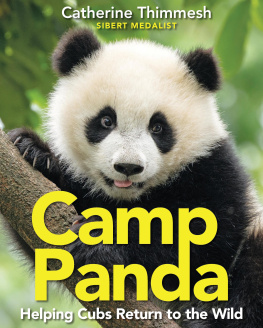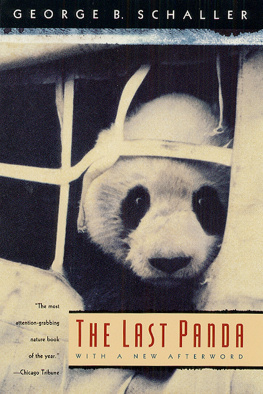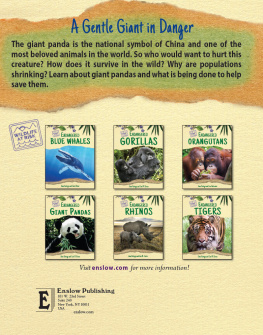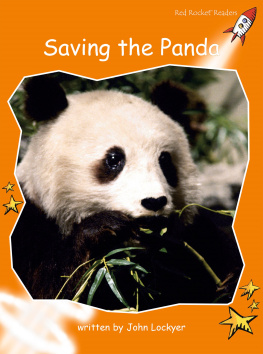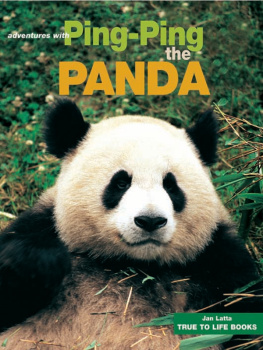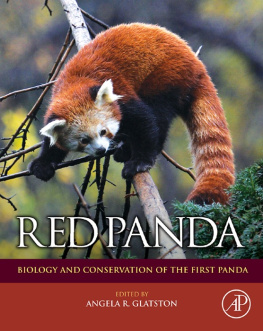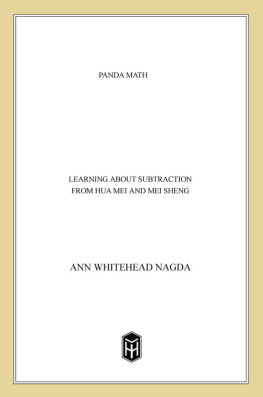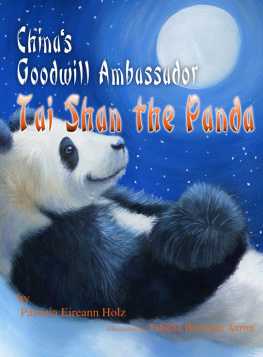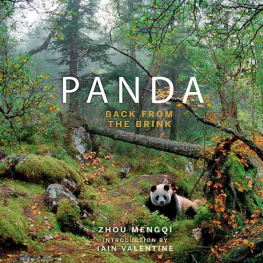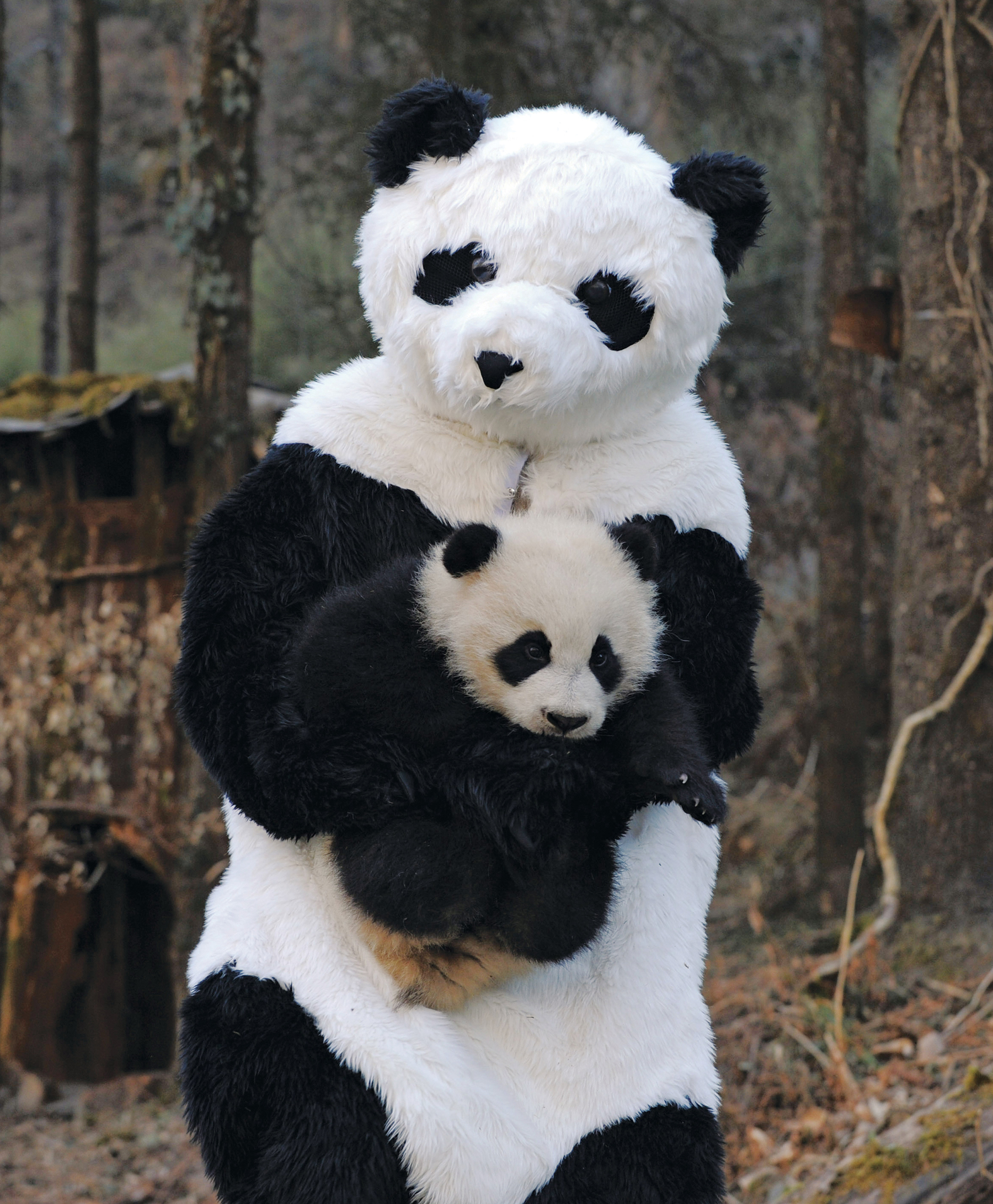For the wild bunch of neighborhood kids (who are no longer kids): Sydney, Colton, Kyle, Victoria, Jameson, Simon, and Jaimie.
Text copyright 2018 by Catherine Thimmesh
Photographs: Alamy: (polar bear)
Map kosmozoo/Getty Images
All rights reserved. For information about permission to reproduce selections from this book, write to or to Permissions, Houghton Mifflin Harcourt Publishing Company, 3 Park Avenue, 19th Floor, New York, New York 10016.
hmhco.com
Cover photographs Alatom/Getty Images
Cover design by Yay! Design
ISBN: 978-0-544-81891-0
Library of Congress Cataloging-in-Publication Data is on file.
eISBN 978-1-328-47665-4
v1.0318
Prologue
L umbering down the grassy mountainside in southwestern Chinabeing careful not to slipis a giant panda teddy bear. It is black and white and fluffy and fuzzy, and it walks upright, unassistedwhich is odd for a teddy bear of any species or size. Odder still is the fact that its teddy bear arms are wrapped tightly around a roly-poly furball who squirms and makes noisesannouncing to the world that he isnt stuffed with fluff. Hes a living, breathing baby panda cub.
Pandas In Peril
D eep in the forest, high in the mountainsamidst the evergreens, the firs, the sprucessits a giant panda. Shes plopped herself on the forest floor, and she munches bamboo shoot after bamboo shoot. Its hard for humans to cut through bamboo with an ax, but the panda peels and eats a single bamboo shoot in forty seconds! She chomps on bamboo sixteen hours a day, every day. Except... when she doesnt.
There are typically only two reasons why a female panda would stop the bamboo eat-a-thon: if she were giving birth or tending to her new cub. A newborn panda cub is exceptionally fragile: weighing only four ounces, blind, hairless, unable to walk (or crawl or scoot), unable to feed itself, and, somewhat surprisingly, unable to poop by itself (which can prove deadly). So for several days Mama Panda will not leave her cubs side even for a moment.
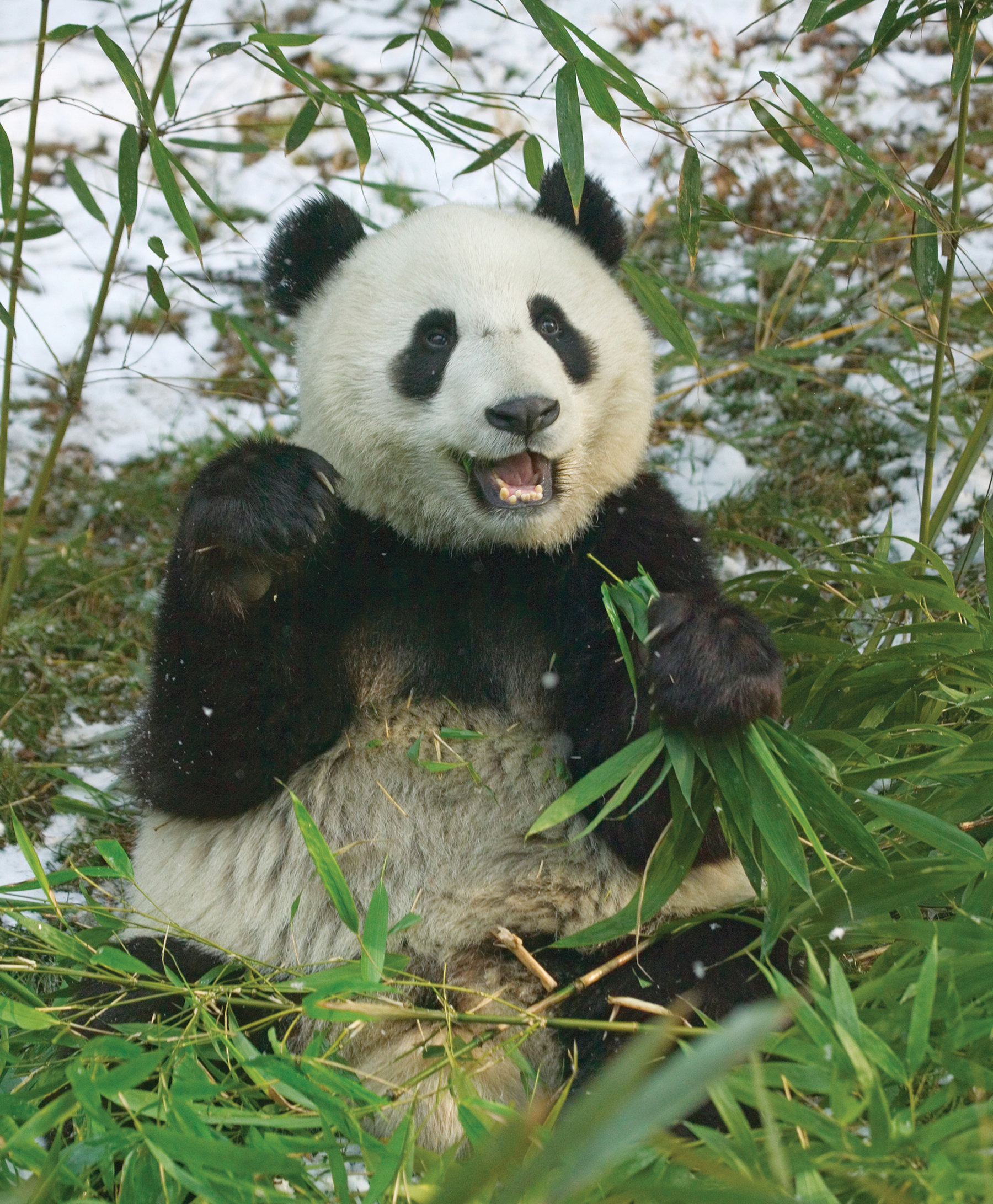
A giant panda in the Wolong Nature Reserve in Sichuan Province, China. The iconic round face of the panda is not chubbiness; its due to massive cheek muscles. The cheek and jaw muscles are so powerful, they easily bite through the thickest bamboo stalks.
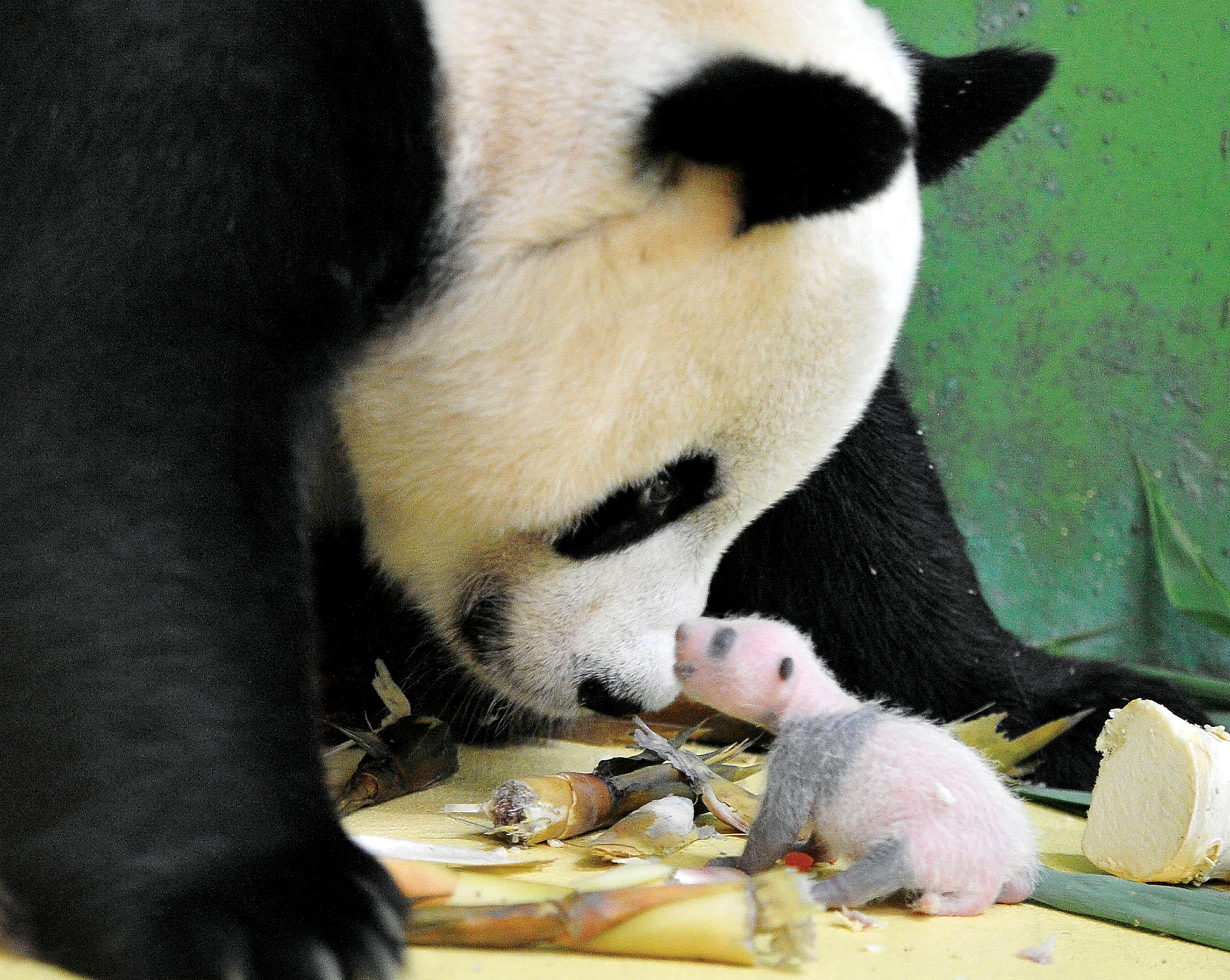
A mama panda with her eighteen-day-old cub at Chimelong Safari Park in Guangzhou. While it appears that they are looking at each other, the cub cannot see until it is forty days old. By one month old, the distinctive black-and-white markings that are starting to appear will be fully developed.
Eventually, though, she secures her newborn in the den and heads back to the bamboo thicket to feastcrucial for her own survival as well as her cubs. Resting on the forest floor, surrounded by her main food source, and munching contentedly, she is completely unaware of the precarious situation she is inthat her whole species is in.
She is unaware of just how few pandas are left in the world, unaware that the giant pandaso rare and beautiful and belovedis vulnerable. Vulnerable, and at risk of becoming extinct in the wild.
PICKY EATER
P andas have evolved to eat a very special dietalmost exclusively bamboo. Because of bamboos low nutrient value, a panda must eat between twenty and forty pounds a day, even in winter, to gain the nutrition it needs. (This explains why the panda bear doesnt hibernate.)
The problem with this diet (aside from being difficult to digest) is that bamboo plants have periodic massive flowering periodsfollowed by massive die-offs. When these die-offs occur, the pandas source of food in an area completely and instantly disappearsputting the pandas in grave danger if they cannot locate more bamboo within their habitat.

A giant panda in the Wolong Nature Reserve chomps on bamboo. There are roughly twenty-five varieties of bamboo plants grown in the area where the pandas currently live. Pandas particularly like the umbrella, arrow, and golden bamboo varieties.
Then & Now
P andas are in peril because of humans! We caused the problem, so we have a responsibility to help fix it, exclaims Suzanne Braden, who, after visiting China and the Wolong Nature Reserve, was so moved by the plight of the panda that, when she returned to the United States, she cofounded the nonprofit Pandas International to help save the magnificent species.
Roughly a thousand years ago, an estimated twenty-three thousand pandas roamed wild and free through many thousands of miles of pristine, tranquil habitat in their native Chinacool, moist forests of mixed broadleaf trees, with plenty of canopy coverage and an abundance of bamboo. But within the last forty years, more than 50 percent of the pandas already shrinking habitat has been destroyed by humanssliced and diced and reduced to six small pockets of isolated land areas, most in southern China. This was a direct result of the growth of agriculture and industrialization, and an unprecedented growthmore of an explosion, actuallyin the human population.
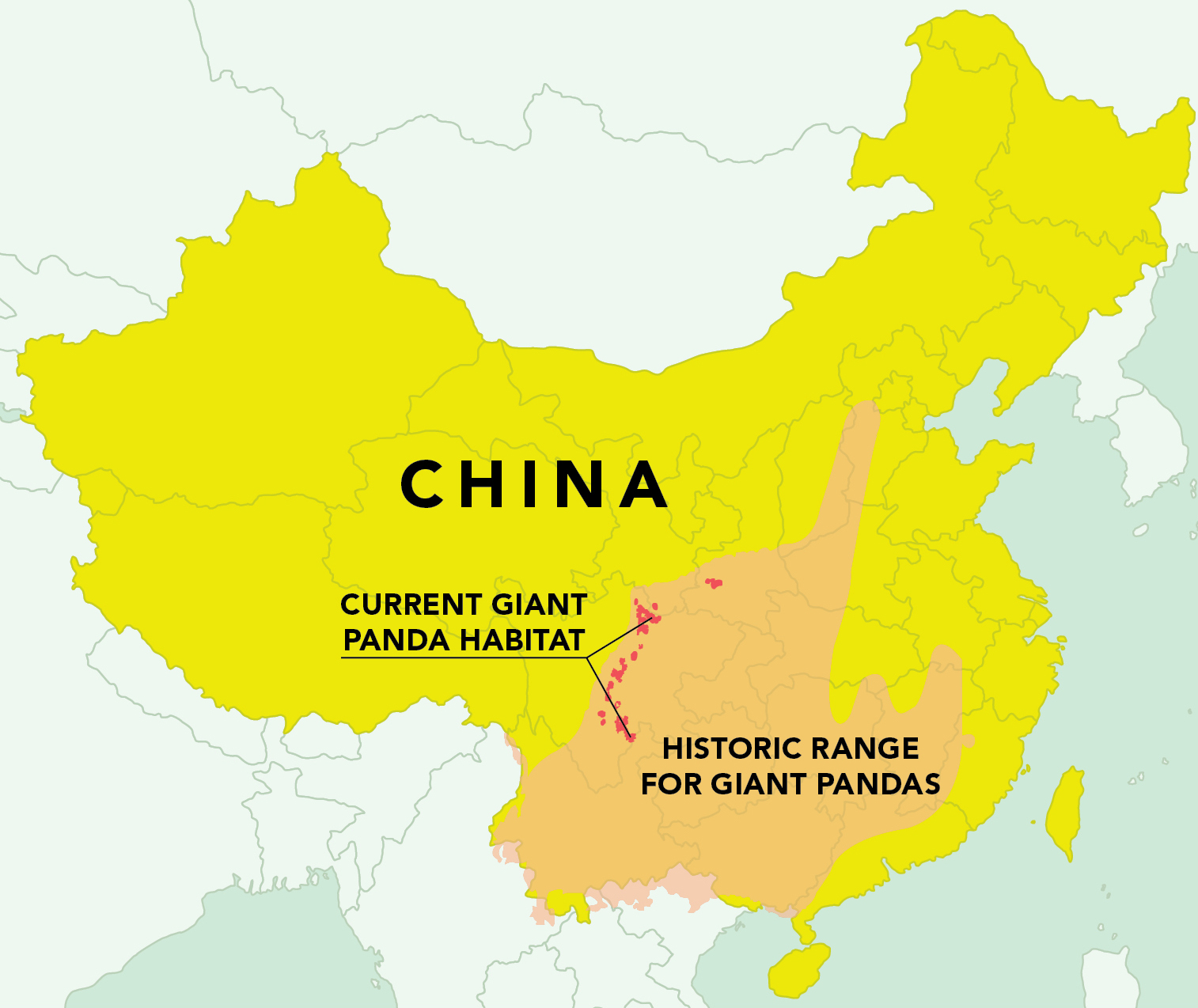
The number of Chinese people grew from five hundred million in the 1950s to one billion just thirty years later and roughly 1.4 billion people today. (In comparison, the United States has about 325 million people.) More and more people meant more and more land needed for homes, businesses, schools, and farms. More agriculture meant more and more land was needed for planting crops and raising livestock. And infrastructure projects meant using more and more land to build roads, railways, bridges, and dams.
Much of this land was territory the panda traditionally roamed. Huge swaths of forest were logged and cleared out, obliterating vast areas and rendering them unsuitable for panda habitat.
It must have been a terrifying time for the pandas: chop chop chop, whoo whoo!, beep beepa cacophony of noise and chaos encroaching on their homes, destroying their food, their shelter... sending them scampering away to unfamiliar lands, higher and higher in the mountains.
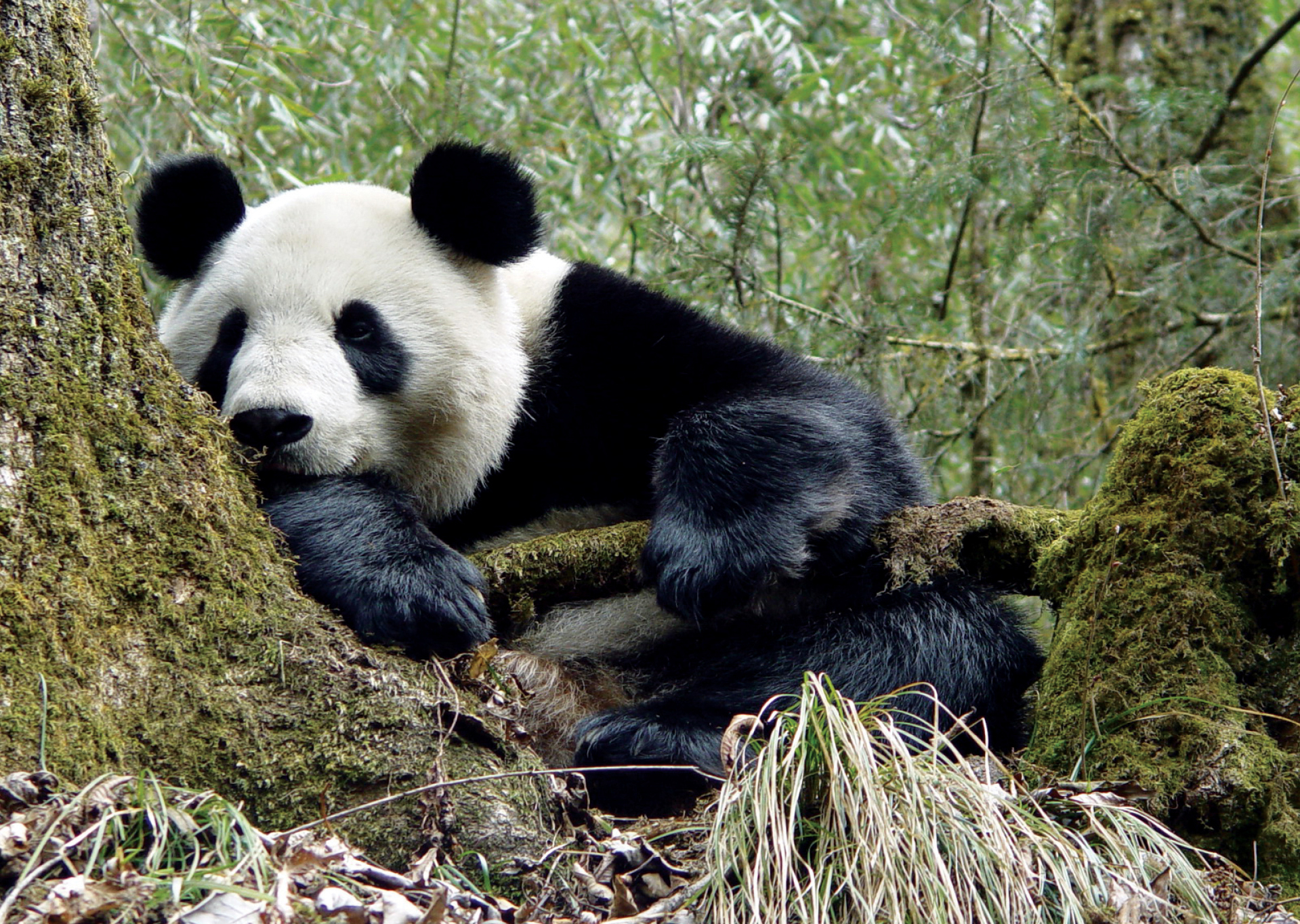
A panda at Wolong hides out by a tree. For pandas here, as well as those in other reserves and in captivity, keepers are often able to distinguish one animal from another by the shape and size of their black eye patches; they all vary slightly.
Not only were pandas put at risk primarily due to habitat destruction and habitat encroachment by humans, but they were also shot and killed by humans: by trophy hunters (before hunting pandas was banned), by poachers (illegally killing pandas anyway, usually for their fur), and by local villagers protecting their livestock.
It was estimated that by the 1980s, a mere one thousand pandas remained in the wild. By 1990, they were officially declared an endangered species.

